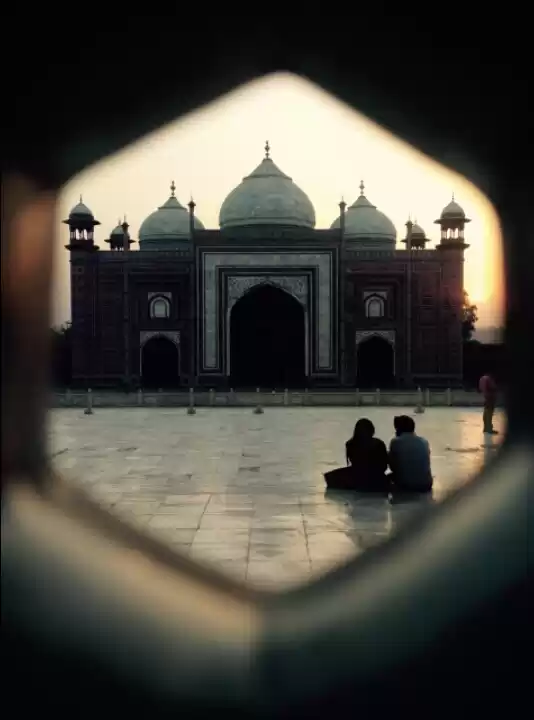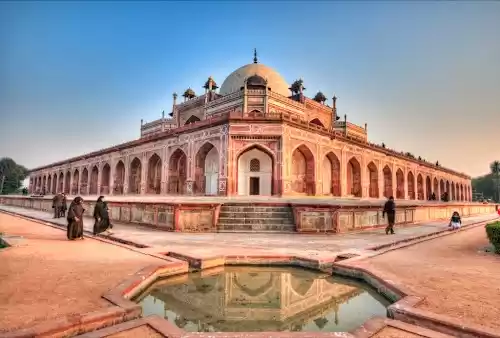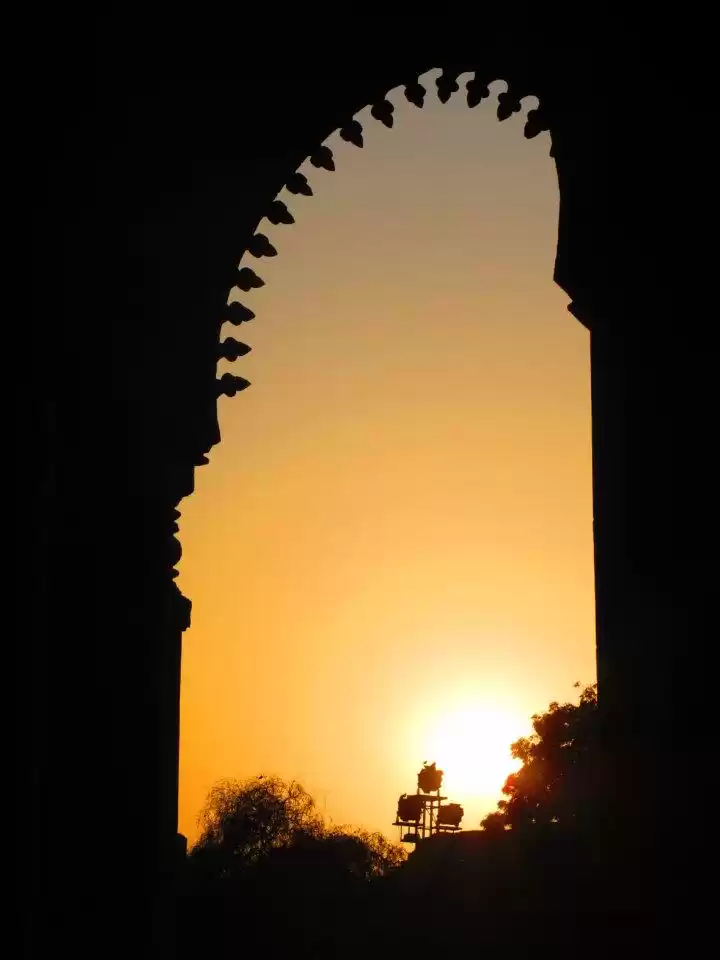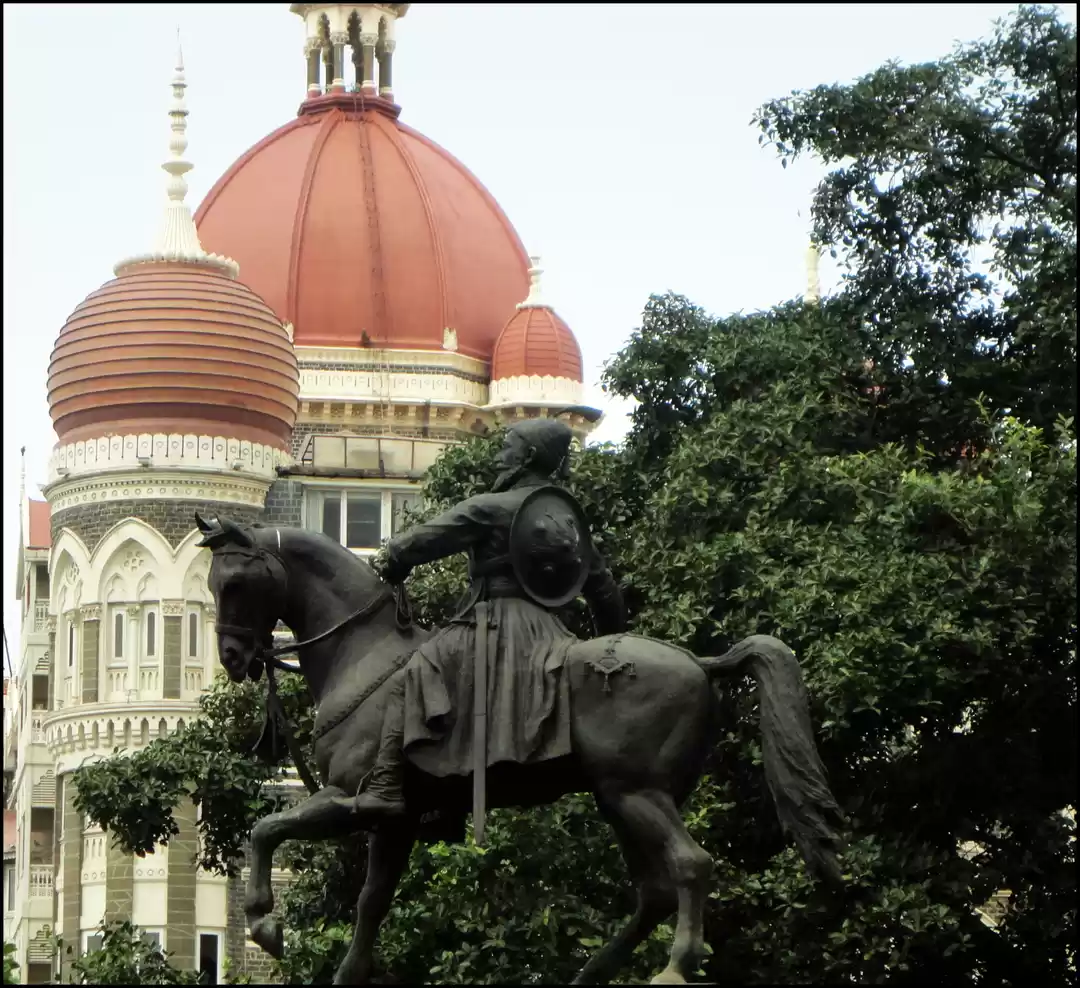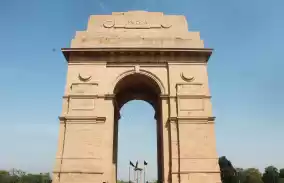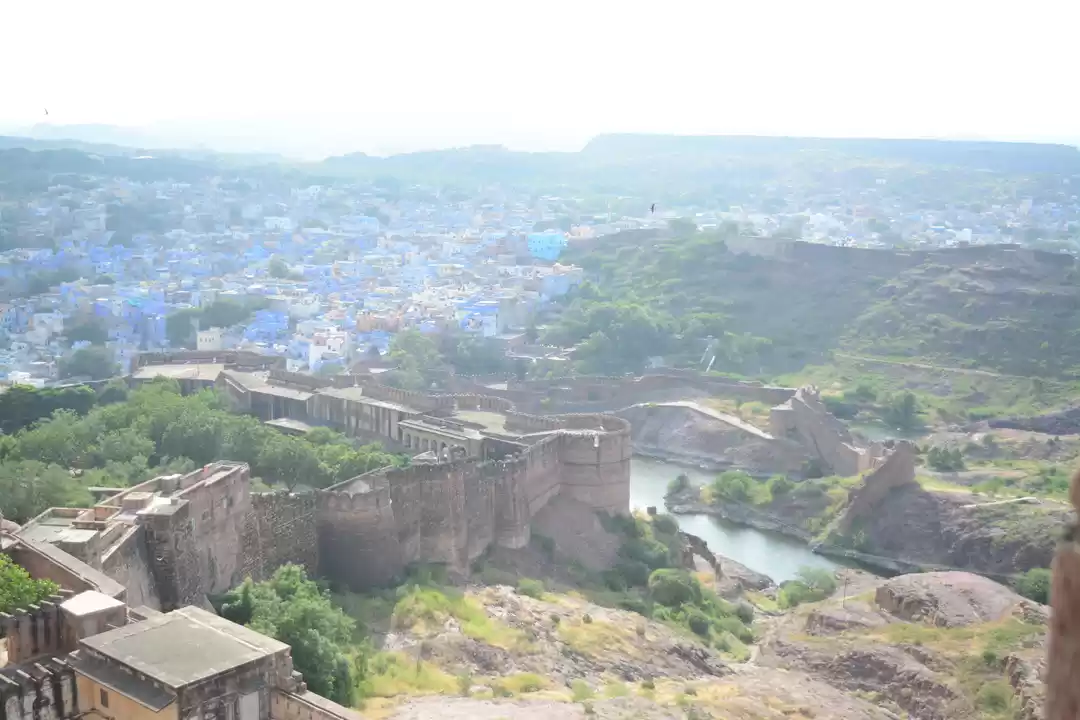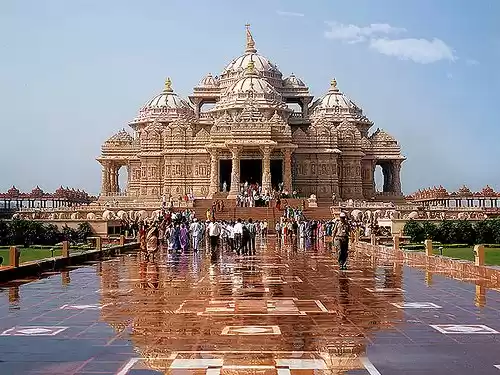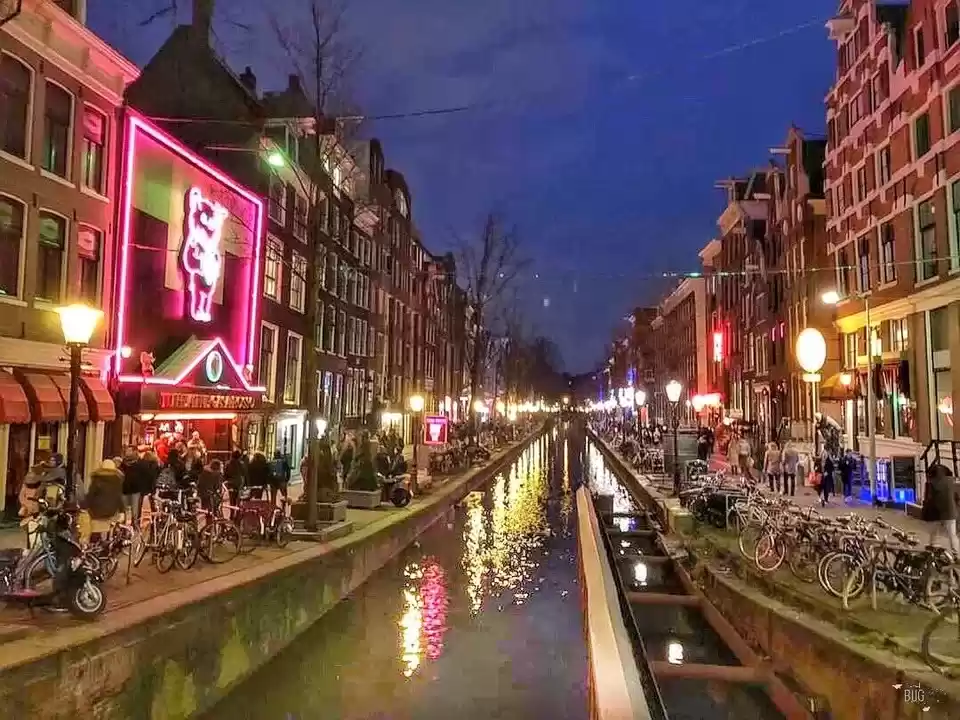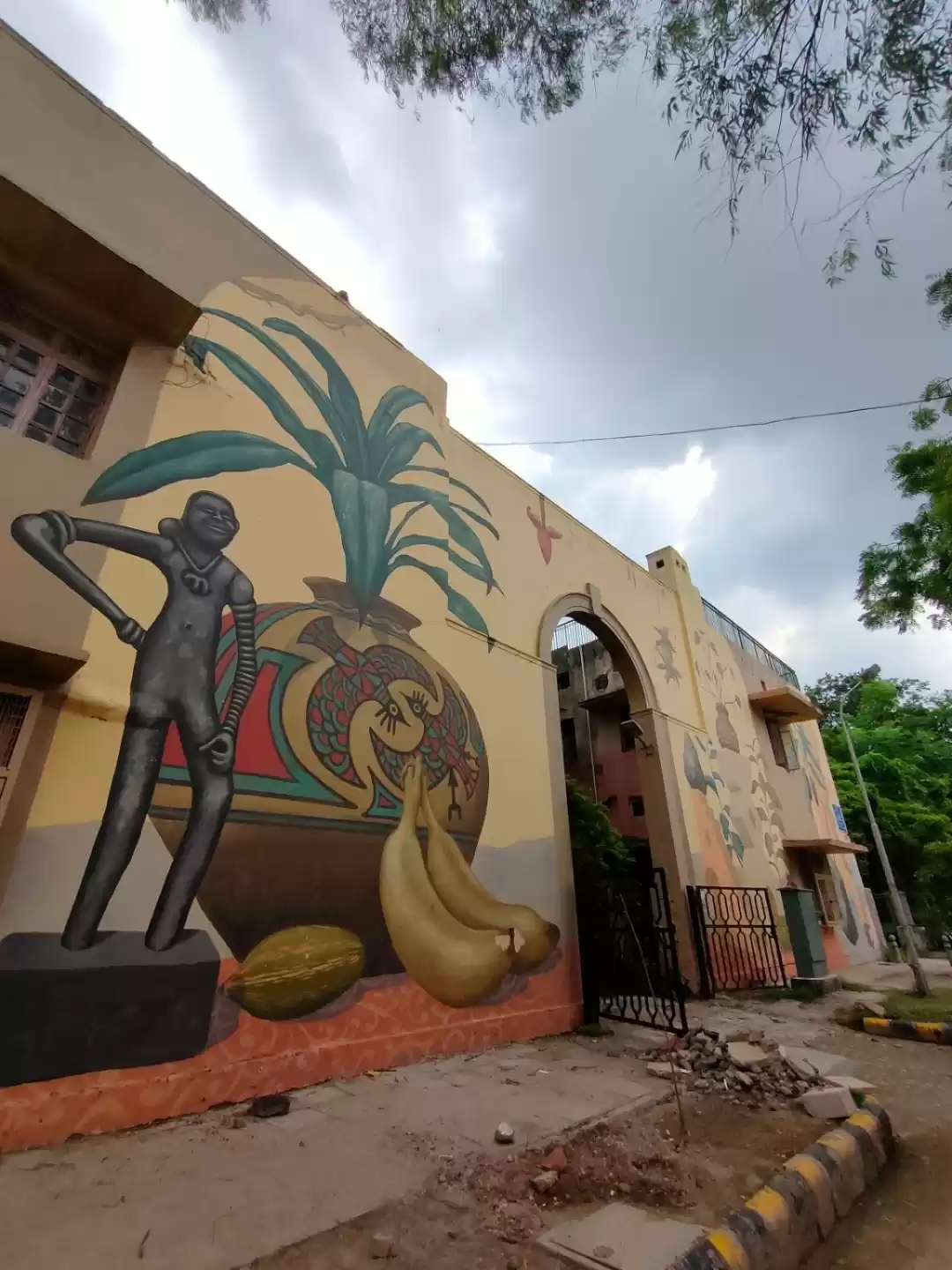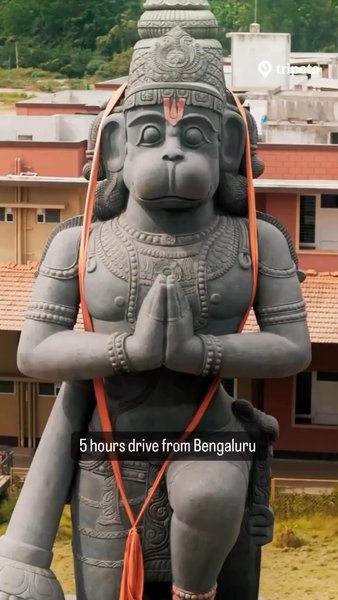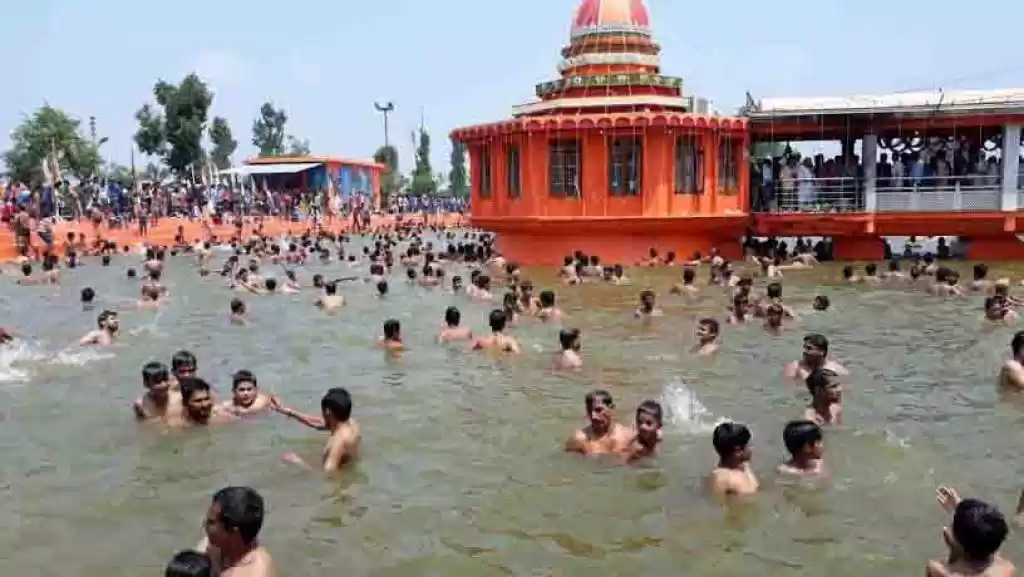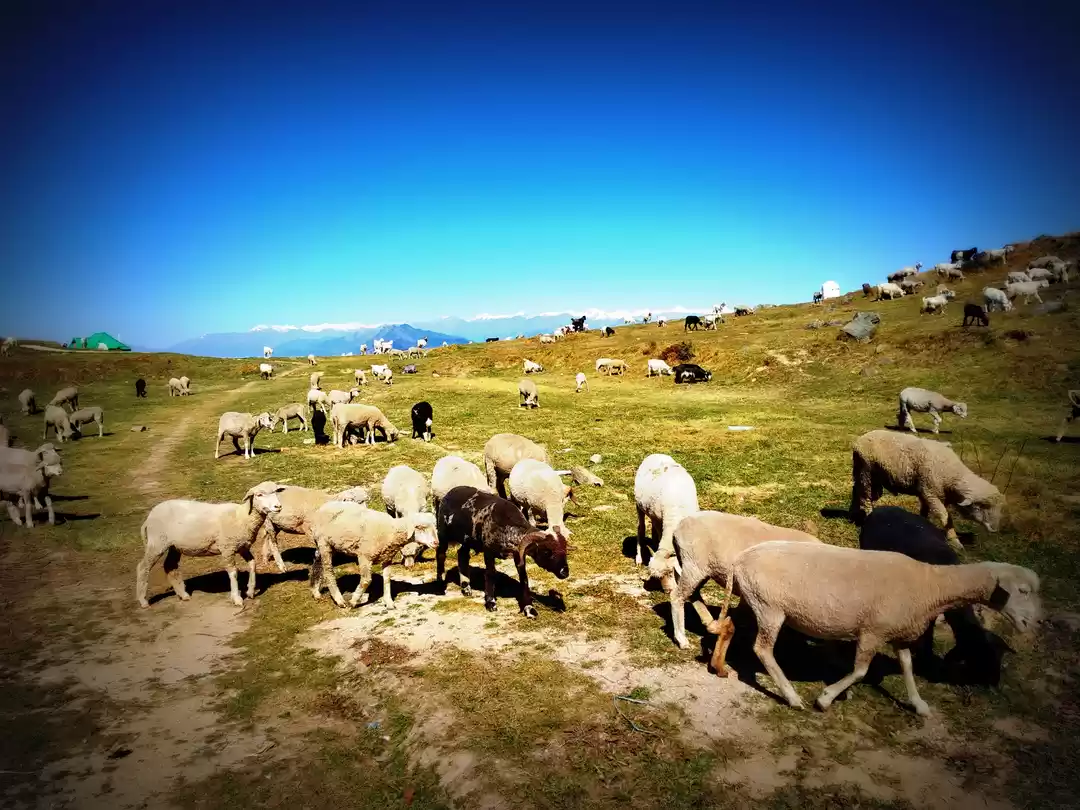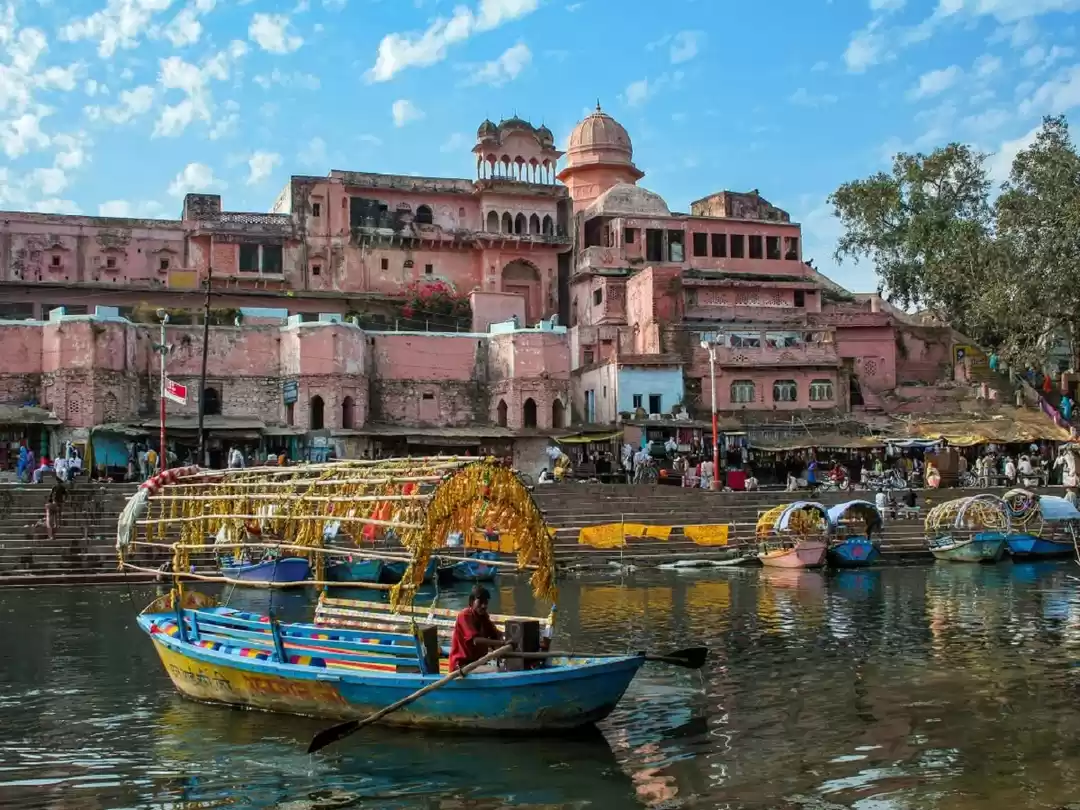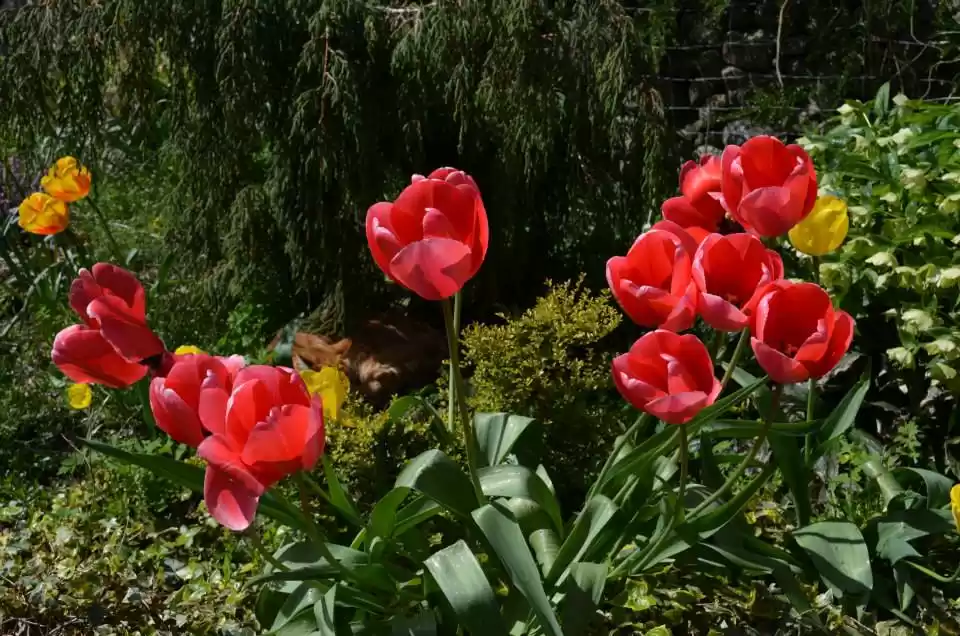Shravasti is a city in Uttar Pradesh, India, that holds a special place in the hearts of Buddhists all over the world. It is here that Buddha spent 24 rainy seasons, taught his disciples, and performed many miracles that amazed his followers and critics alike. Shravasti is also a holy city for the Jains and the Hindus, who have their own temples and legends associated with the city.
Shravasti is a treasure trove of ancient and medieval heritage, with archaeological ruins, monasteries, stupas, and inscriptions that testify to its glorious past. If you are looking for a spiritual and cultural journey, Shravasti is the perfect destination for you. In this guide, we will tell you everything you need to know about Shravasti tourism in 2023, including its history, culture, places to visit, best time to visit, how to reach, travel essentials, travel packages, nearby places to visit, and FAQ.
History of Shravasti
Shravasti derives its name from King Shravasta, who founded the city and made it the capital of the Kosala kingdom. The city was also known as Savatthi, Sahet-Mahet, and Jetavana. Shravasti was one of the six largest and wealthiest cities in ancient India, along with Rajagriha, Vaishali, Kausambi, Pataliputra, and Ujjain. It was a center of trade, commerce, art, and culture, and attracted many visitors from far and wide.
Shravasti’s history is intertwined with the life and teachings of Buddha, who arrived in the city in the fifth century BCE, and spent 24 rainy seasons in the Jetavana monastery, which was donated to him by his disciple Anathapindika, a wealthy merchant. It was here that Buddha delivered many of his sermons, such as the Anapanasati Sutta, the Mahasatipatthana Sutta, and the Dhammapada. It was also here that Buddha performed many miracles, such as the multiplication of his body, the taming of a wild elephant, and the creation of a lotus pond. These miracles are depicted in the Jataka tales, the Pali canon, and the Buddhist art.
Shravasti was also visited by Mahavira, the 24th Jain Tirthankara, who preached his doctrine of non-violence and karma. He attained enlightenment in Shravasti, and converted many people to Jainism. Shravasti is also associated with Hinduism, as it is believed to be the birthplace of Sati, the consort of Lord Shiva, and the place where Rama and Lakshmana met Bharata and Shatrughna after their exile.
Shravasti’s prosperity and glory declined after the invasion of the Kushans in the first century CE, who destroyed the city and its monuments. The city was gradually forgotten and buried under the dust of time, until it was rediscovered and excavated by the British archaeologists in the 19th and 20th centuries. They unearthed the remains of the city walls, the gates, the palaces, the temples, and the inscriptions, which revealed the rich and diverse history of Shravasti.
Culture of Shravasti
Shravasti is a city that celebrates its cultural and religious diversity and harmony. It is home to people of different faiths, such as Buddhism, Hinduism, Jainism, and Islam, who coexist peacefully and respectfully. Shravasti’s culture reflects the influence of the ancient and medieval periods, as well as the modern times.
The languages spoken in Shravasti are mainly Hindi and Awadhi, which are derived from the Sanskrit and Prakrit languages that were used by Buddha and Mahavira. The cuisines of Shravasti are mainly vegetarian, as it is a holy city for the Buddhists and the Jains. The dishes are simple but delicious, such as dal, roti, sabzi, rice, kachori, samosa, jalebi, etc. The local specialties are the imarti, the peda, and the malpua, which are sweet delicacies made from milk and sugar.
The customs and traditions of Shravasti are influenced by the teachings and practices of the different religions that have flourished in the city. The people of Shravasti are devout and hospitable, and follow the values of generosity, compassion, and non-violence. They also celebrate the festivals and events that mark the heritage and spirit of Shravasti, such as the Buddha Purnima, the Shravasti Mahotsav, the Dussehra, the Diwali, and the Holi. These festivals are occasions of joy, devotion, and unity, and attract many pilgrims and tourists to Shravasti.
Places to Visit in Shravasti
Shravasti is a city that offers a variety of attractions and places to visit for the visitors, who can explore the ancient and medieval monuments, the religious and spiritual sites, and the natural and scenic beauty of the city. Some of the main places to visit in Shravasti are:

Jetavana:
The monastery where Buddha spent 24 rainy seasons, and where he performed many miracles, such as the multiplication of his body, the taming of a wild elephant, and the creation of a lotus pond. It also contains the Gandhakuti (Buddha’s hut), the Anandabodhi tree, and the meditation cells of the monks. Jetavana is a serene and sacred place, where one can feel the presence and the teachings of Buddha, and meditate in peace and tranquility.
Anathapindika’s Stupa:
The stupa built by Anathapindika, a wealthy merchant who donated the Jetavana monastery to Buddha, and who was one of his most devoted disciples. It is said to contain the relics of Anathapindika, and is revered by the Buddhists as a symbol of generosity and faith. Anathapindika’s Stupa is a majestic and impressive structure, which stands as a testimony of the love and gratitude of Anathapindika towards Buddha, and inspires the visitors to follow his example.
Angulimala’s Stupa:
The stupa built by Angulimala, a notorious bandit who wore a garland of human fingers, and who was converted by Buddha and became a monk. It is said to contain the relics of Angulimala, and is revered by the Buddhists as a symbol of repentance and transformation. Angulimala’s Stupa is a humble and simple structure, which stands as a testimony of the power and the compassion of Buddha, and inspires the visitors to overcome their negative emotions and actions.
Shobhnath Temple:
The temple dedicated to the 23rd Jain Tirthankara, Parshvanath, who is believed to have attained enlightenment in Shravasti. It is one of the oldest and most sacred Jain temples in India, and attracts many pilgrims and tourists. Shobhnath Temple is a beautiful and elegant structure, which stands as a testimony of the wisdom and the purity of Parshvanath, and inspires the visitors to follow his path of non-violence and karma.
Maheth:
The archaeological site that covers the ancient city of Shravasti, and contains the ruins of the city walls, the gates, the palaces, the temples, and the inscriptions. It also contains the Saheth, which is the area where the Buddhist monasteries and stupas are located. Maheth is a fascinating and intriguing place, where one can witness the remnants and the glory of the past, and learn about the history and the culture of Shravasti.
Best Time to Visit Shravasti
Shravasti has a subtropical climate, which has three seasons: summer, monsoon, and winter. The summer season lasts from April to June, and is hot and dry, with temperatures ranging from 25°C to 45°C. The monsoon season lasts from July to September, and is humid and rainy, with temperatures ranging from 20°C to 35°C. The winter season lasts from October to March, and is pleasant and cool, with temperatures ranging from 10°C to 25°C.
The best time to visit Shravasti is from October to March, when the weather is ideal for sightseeing and exploring the city. This is also the time when the festivals of Buddha Purnima, Shravasti Mahotsav, Dussehra, Diwali, and Holi are celebrated, which add to the charm and the vibrancy of the city. The visitors can enjoy the cultural and religious events, and participate in the rituals and the festivities.
The visitors should avoid visiting Shravasti from April to June, when the weather is scorching and uncomfortable, and from July to September, when the weather is wet and unpredictable. These seasons are not suitable for outdoor activities and travel, and can cause inconvenience and disappointment.
How to Reach Shravasti
Shravasti is well-connected by air, rail, and road to other cities in India, and can be easily reached by the visitors. The different modes of transportation and routes to reach Shravasti are:
By air:
The nearest airport to Shravasti is the Lucknow International Airport, which is about 175 km away. The airport has flights to and from major cities in India, such as Delhi, Mumbai, Bangalore, Chennai, etc., as well as some international destinations, such as Dubai, Singapore, Bangkok, etc. From the airport, the visitors can take a taxi or a bus to Shravasti, which takes about 4 hours.
By train:
The nearest railway station to Shravasti is the Balrampur Railway Station, which is about 17 km away. The station has trains to and from other cities in Uttar Pradesh, such as Lucknow, Varanasi, Kanpur, etc., as well as some other states, such as Bihar, Madhya Pradesh, Rajasthan, etc. From the station, the visitors can take a taxi or a rickshaw to Shravasti, which takes about 30 minutes.
By road:
Shravasti is well-connected by road to other cities in Uttar Pradesh, such as Lucknow, Ayodhya, Varanasi, etc. The visitors can take a state or private bus, or hire a car, to reach Shravasti, which takes about 5 to 6 hours from Lucknow, 3 to 4 hours from Ayodhya, and 8 to 9 hours from Varanasi. The road journey is scenic and comfortable, and passes through the countryside and the villages of Uttar Pradesh.
Travel Essentials for Shravasti
Shravasti is a city that requires some preparation and planning before visiting, as it is a holy and ancient city, with its own rules and regulations, as well as its own charm and challenges. The visitors should be aware of some useful and practical information and tips to enjoy their trip to Shravasti, such as:
Currency:
The currency used in Shravasti is the Indian Rupee (INR), which can be exchanged at banks, ATMs, or authorized dealers. The visitors should carry some cash, as well as cards, for their convenience and safety, as some places may not accept cards or digital payments.
Visa:
The visa policy for India depends on the visitor’s nationality, purpose, and duration of visit. The visitors should check the official website of the Indian government or the Indian embassy in their country for the latest and accurate information and requirements for obtaining a visa for India. Some countries are eligible for an e-visa, which can be applied online and obtained within a few days, while some countries may require a regular visa, which can be applied at the nearest Indian consulate and obtained within a few weeks.
Accommodation:
The accommodation options in Shravasti range from budget to luxury hotels, guest houses, and homestays. The visitors should book their accommodation in advance, especially during the peak season and the festival time, to avoid any inconvenience and disappointment. The average cost of accommodation in Shravasti is around INR 1000 to INR 5000 per night, depending on the type and the location of the place. Some of the recommended places to stay in Shravasti are:
Lotus Nikko Hotel: A 3-star hotel that offers comfortable and spacious rooms, with amenities such as air-conditioning, TV, Wi-Fi, etc. The hotel also has a restaurant, a garden, and a conference hall. The hotel is located near the Jetavana monastery, and is ideal for pilgrims and tourists who want to stay close to the main attraction of Shravasti. The price of a room is around INR 3000 per night.
Hotel Pawan Palace: A 2-star hotel that offers decent and clean rooms, with amenities such as air-conditioning, TV, Wi-Fi, etc. The hotel also has a restaurant, a terrace, and a parking space. The hotel is located near the Balrampur railway station, and is ideal for travelers who want to stay near the transport hub of Shravasti. The price of a room is around INR 1500 per night.
Shanti Guest House: A budget guest house that offers basic and cozy rooms, with amenities such as fan, TV, Wi-Fi, etc. The guest house also has a restaurant, a garden, and a library. The guest house is located near the Shobhnath temple, and is ideal for backpackers and solo travelers who want to stay in a friendly and peaceful environment. The price of a room is around INR 500 per night.
Food:
The food in Shravasti is mainly vegetarian, as it is a holy city for the Buddhists and the Jains. The visitors can find a variety of dishes, such as dal, roti, sabzi, rice, kachori, samosa, jalebi, etc., in the local restaurants and street stalls. The food is simple but delicious, and reflects the influence of the Awadhi and the Mughlai cuisines. The visitors should also try the local specialties, such as the imarti, the peda, and the malpua, which are sweet delicacies made from milk and sugar. The average cost of food in Shravasti is around INR 200 to INR 500 per person, depending on the type and the location of the place. Some of the recommended places to eat in Shravasti are:

Jetavana Restaurant: A restaurant that serves a variety of dishes, such as Indian, Chinese, Continental, etc., in a spacious and elegant setting. The restaurant is located in the Lotus Nikko Hotel, and is ideal for visitors who want to enjoy a fine dining experience. The price of a meal is around INR 500 to INR 1000 per person.
Pawan Restaurant: A restaurant that serves a variety of dishes, such as Indian, Chinese, South Indian, etc., in a casual and cozy setting. The restaurant is located in the Hotel Pawan Palace, and is ideal for visitors who want to enjoy a budget-friendly meal. The price of a meal is around INR 200 to INR 500 per person.
Shanti Cafe: A cafe that serves a variety of dishes, such as sandwiches, pizzas, burgers, etc., in a relaxed and cheerful setting. The cafe is located in the Shanti Guest House, and is ideal for visitors who want to enjoy a snack or a drink. The price of a meal is around INR 100 to INR 300 per person.
Shopping:
The shopping in Shravasti is mainly for souvenirs, handicrafts, and religious items, such as Buddha statues, prayer beads, incense sticks, candles, etc. The visitors can find these items in the local markets and shops near the monasteries and temples. The visitors should bargain for the best price, and avoid buying anything that is made from animal products, such as leather, fur, bone, etc., as it is considered disrespectful and illegal. The average cost of shopping in Shravasti is around INR 500 to INR 1000 per person, depending on the type and the quantity of the items. Some of the recommended places to shop in Shravasti are:
Jetavana Market: A market that sells a variety of souvenirs, handicrafts, and religious items, such as Buddha statues, prayer beads, incense sticks, candles, etc. The market is located near the Jetavana monastery, and is ideal for visitors who want to buy something related to Buddhism. The price of an item is around INR 100 to INR 500, depending on the size and the quality of the item.
Shobhnath Bazaar: A bazaar that sells a variety of souvenirs, handicrafts, and religious items, such as Parshvanath statues, Jain symbols, paintings, etc. The bazaar is located near the Shobhnath temple, and is ideal for visitors who want to buy something related to Jainism. The price of an item is around INR 100 to INR 500, depending on the size and the quality of the item.
Maheth Market: A market that sells a variety of souvenirs, handicrafts, and antiques, such as pottery, coins, jewelry, etc. The market is located near the Maheth archaeological site, and is ideal for visitors who want to buy something related to the ancient and medieval history of Shravasti. The price of an item is around INR 500 to INR 1000, depending on the rarity and the authenticity of the item.
Safety: Shravasti is a safe and friendly city, where the visitors can enjoy their trip without any major worries or troubles. However, the visitors should take some basic precautions, such as keeping their valuables and documents safe, avoiding traveling alone at night, respecting the local culture and customs, and being aware of the local laws and regulations. The visitors should also be careful of the weather and the health conditions, and carry some essentials, such as sunscreen, water, medicines, etc. The visitors should also be alert of the touts and the scammers, who may try to cheat or harass them, and report any incidents to the authorities.
Shravasti is a city that will enchant and enlighten you with its ancient and sacred history, culture, and attractions. It is a city that will take you back to the times of Buddha, Mahavira, and Rama, and make you feel their presence and teachings. It is a city that will offer you a variety of experiences, from sightseeing and exploring the archaeological ruins, to meditating and participating in the festivals and events.
Shravasti is a city that will inspire and transform you with its miracles and mysteries. If you are looking for a spiritual and cultural journey, Shravasti is the perfect destination for you.
We hope that this guide has helped you to plan and prepare your trip to Shravasti, and that you will have a memorable and enjoyable time in the city. Thank you for choosing Tripoto, and happy travels!


